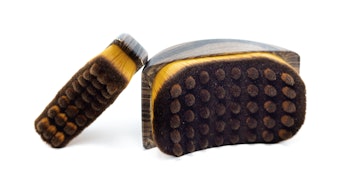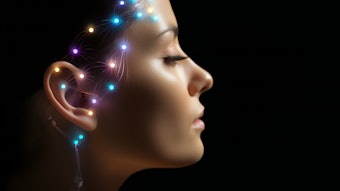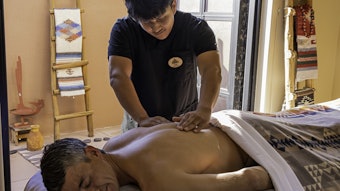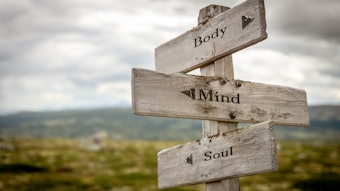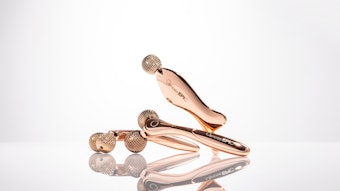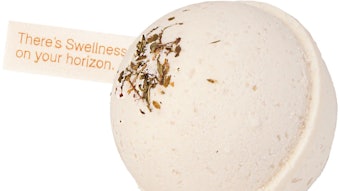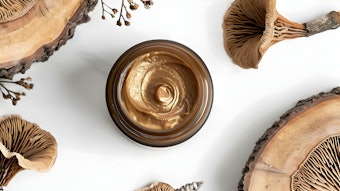Stress-free or stressed to the max—which is better for you? You may be surprised to learn that the answer is neither, really; it is all about balance. In this crazy world in which stress often is the norm, your clients are seeking better ways to cope. Fast food, alcohol, caffeine, nicotine and sugar continue to be commonplace solutions for dealing with stress, but, more and more, clients are seeking fewer of these negative and short-term outlets, and are replacing them with healthy lifestyle changes, such as nutrition, exercise and meditation.
What is stress?
So, what is stress, and why does it have such a powerful effect on the body and mind? For better or worse, this tension is a daily reminder of the nervous system’s ability to assure you of its presence, as well as its overwhelming ability to control the ways you think and feel. The term “stress” refers to both positive and negative effects on the body and mind, but more often is perceived as a harmful condition. Stress is defined as the body’s response to any demand placed on it. A stressor—which can be either internal or external—triggers it.
Fortunately, not all stress is negative. “Eustress” is the term used to signify good stress—there really is such a thing! Eustress provides the body and psyche with motivation, and spurs improved performance. For example, do you remember the anxiety you felt before taking your state board examination for certification? Without feeling a little pressure to pass it, your performance may have been inhibited. Eustress can provide focus, and prevent life from becoming mundane and boring. Negative stress rightfully is defined as “distress,” which eventually can lead to disease if it is excessive. Positive and negative reactions can accumulate and result in chronic stress.
The nervous system
OK, so what about those everyday stressors? You are late for work, you can’t find your keys, your in-laws are coming for a visit—these all add up. A lot of these little things literally can become a giant pain in the neck.
The nervous system plays a leading role in the management of stress. It is a complex system that is comprised of two principal divisions: the central nervous system and the peripheral nervous system. The central nervous system is composed of the brain and spinal cord, and is the control center for the entire nervous system. The peripheral nervous system is composed of spinal and cranial nerves, and has two subdivisions: the somatic nervous system and the autonomic nervous system. The somatic nervous system is controlled consciously and, therefore, controls voluntary activity. The autonomic nervous system involves involuntary actions that aren’t governed by conscious control.
The autonomic portion of the nervous system further divides into the sympathetic and the parasympathetic nervous systems. The sympathetic and parasympathetic divisions of the autonomic nervous system are opposing forces that have the goal of maintaining homeostasis and, therefore, achieving balance within the body. The sympathetic nervous system is associated with expending energy, while the parasympathetic division is associated with conserving energy. For example, heart rate is increased under sympathetic nervous system activity and decreased under parasympathetic nervous system activity. It is the sympathetic nervous system that rules the “fight-or-flight” response.
Fight or flight
You are taking a walk in the country, venture into a field and suddenly a raging bull is pounding toward you. Your body responds, the sympathetic nervous system kicks into high gear and you run for your life! Your body takes over, and fear sets in.
Daily occurrences, such as sitting in traffic, interacting with difficult colleagues, and dealing with clients and time constraints, also may elicit the fight-or-flight response. You want to run, but you can’t. It is these circumstances—the hassles of daily life—that can be the most detrimental to your health if they aren’t managed properly.
The body’s response to stress includes the release of adrenal hormones, such as adrenaline (epinephrine) and noradrenaline (norepinephrine), into the bloodstream. If you are running from that raging bull, for example, these hormone levels return to normal once the fear has been eliminated.
The more stress that is perceived, the more long-lasting the effects of the hormones, leading to intensified and prolonged responses by the sympathetic nervous system. Additional adrenal hormones, such as cortisol, are stimulated, leading to increased anxiety levels, compromised immune function and poor healing ability.
Facilitating stress
So, what does this have to do with the skin and your role as a skin therapist? Stress is a fact of life, and how you manage it matters. It affects you physically, psychologically and behaviorally. Skin care therapists often are faced with conditions that are triggered or exacerbated by stress. Your role in the treatment room involves helping clients to feel as relaxed as possible. This will assist them in dealing with the cause, and not just the symptoms, of stress. There are many ways to facilitate this.
Although you shouldn’t move away from practicing serious skin care in order to turn your business into a pamper party, it is important to recognize that stress affects the skin and may set off many conditions that you see on a daily basis. Part of ensuring improvement in certain instances is initiating clients’ awareness of stress. For example, it is known that, although it is not caused by stress, rosacea can be impacted by it—resulting in a flare-up or worsening symptoms. Similarly, acne symptoms often are magnified by stress, particularly in the case of adult-onset acne. Skin conditions such as eczema and psoriasis also are exacerbated by it.
Deep breathing. A very simple, yet effective, coping mechanism is deep breathing. During the stress response and times of chronic stress, breathing often becomes shallow and labored. If you are breathing correctly, your diaphragm is engaged. If your breathing is shallow, secondary respiratory muscles often are used instead of the diaphragm; this alters the gas exchange between the lungs and the air. Poor breathing techniques can lead to altered carbon dioxide levels in the blood, resulting in increased anxiety levels. The lack of oxygen causes fatigued, tense muscles and metabolic waste buildup in the tissues. Encouraging deep breathing, as well as controlled inhalation and exhalation, can improve your clients’ health.
Have them take a few controlled deep breaths before beginning any treatment. In order to promote good inhalation techniques, consider incorporating an essential oil, such as chamomile, neroli or lavender. Place your cupped hands just above the client’s nose and mouth, taking deep breaths with them. Just remember, they don’t want to smell the pizza you ate for lunch.
It is important to note that essential oils have powerful effects on the emotions when transferred via the olfactory system, where they are interpreted in the brain. Your essential oil blend should elicit calmness and serenity. These responses actually target the brain waves.
There are four brain wave states, but only two should be considered when choosing essential oils for promoting relaxation. Beta brain waves operate at a higher frequency, and essentially are known as those associated with thinking and action. Alpha brain waves operate at a lower frequency, and enable you to access your intuitive and creative right brain more readily. Therefore, beta waves are more stimulating and, if overutilized, can cause muscle tension and increased levels of anxiety. During treatments, and in order to aid in the relaxation response, alpha waves should dominate.
Environment. The ambiance of your treatment room should be conducive to influencing alpha brain waves, so soothing music choices are important. Punk rock is not going to cut it.
Massage. Touch, particularly in the form of massage, has a positive effect on stress reduction and the nervous system. Massage stimulates the sensory nerves, which promote feelings of well-being. Stress hormones such as cortisol are reduced, along with pain, and immune function is improved. Acupressure can enhance energy flow—or chi—and have a positive effect on the nervous system. Hot stone massage improves circulation and helps elicit the relaxation response. Placing hot stones between the toes or in a spinal layout pattern, or positioning a belly stone before a treatment are welcome additions for many clients.
Reflexology. Adding reflexology to your treatments or as a stand-alone service is a great way to promote calm. Even if enjoyed for only a short time, it makes a big difference to the nervous system.
Lymphatic drainage massage. Chronic stress negatively impacts the lymphatic system, so lymph drainage massage is beneficial not only for heightening relaxation, but also in aiding with the elimination of toxins and improving immune function. When lymphatic drainage is mastered, it has a soothing effect on the sympathetic nervous system.
Toxin elimination. Toxin elimination helps to alleviate the physical manifestations associated with chronic stress by reducing waste buildup in cells and tissues. Mud, parafango, paraffin and herbal linen wraps are great treatments to stimulate detoxification. Simply warming the body by using an infrared lamp can aid in toxin elimination due to increased circulation and improved tissue repair.
The mind-body connection
No matter if a threat is real or perceived, the body and mind react, and the symptoms that result are genuine. As a skin care therapist, you play an active role in helping your clients to manage their stress more effectively. Whether this is achieved through the promotion of the relaxation response or by treating skin conditions triggered by stress, you can have a positive effect—both physiologically and psychologically.
Stress is not going anywhere—it is here to stay. Clients who are under a great deal of anxiety often display it in their body language—some recognize that they are stressed; others are so used to it that they are unaware of what it feels like to experience anything else. Market treatments that are focused on their skin concerns to the stressed client while incorporating the mind-body connection. This will help them cope and improve their skin, while slowing the aging process. Your treatment room is an escape, even if only for a short period of time, so don’t underestimate the role you can play in helping your clients deal with stress.
REFERENCES
- Biology, Anatomy and Physiology: The Nervous System. www.sirinet.net/~jgjohnso/nervous.html
- DD Beaton, Effects of Stress and Psychological Disorders on the Immune System, www.personalityresearch.org/papers/beaton.html
- GJ Tortora, An Introduction to the Human Body, Essentials of Anatomy and Physiology (2nd Edition), Harper Collins (1991)
